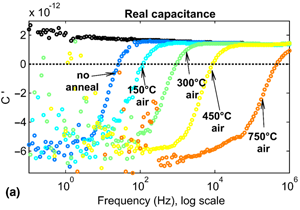Crossref Citations
This article has been cited by the following publications. This list is generated based on data provided by
Crossref.
Lopez-Richard, Victor
Wengenroth Silva, Rafael Schio
Lipan, Ovidiu
and
Hartmann, Fabian
2023.
Tuning the conductance topology in solids.
Journal of Applied Physics,
Vol. 133,
Issue. 13,
Jin, Yifan
and
Gerhardt, Rosario A.
2023.
Simplified Simulations and Experiments to Determine Impedance Trends for Parallel Circuits in Series and in Parallel.
p.
698.
Lopez-Richard, Victor
Pradhan, Soumen
Castelano, Leonardo K.
Wengenroth Silva, Rafael Schio
Lipan, Ovidiu
Höfling, Sven
and
Hartmann, Fabian
2024.
Accuracy bottlenecks in impedance spectroscopy due to transient effects.
Journal of Applied Physics,
Vol. 136,
Issue. 16,
Gerhardt, Rosario A.
2024.
Encyclopedia of Condensed Matter Physics.
p.
266.
Lopez-Richard, Victor
Pradhan, Soumen
Wengenroth Silva, Rafael Schio
Lipan, Ovidiu
Castelano, Leonardo K.
Höfling, Sven
and
Hartmann, Fabian
2024.
Beyond equivalent circuit representations in nonlinear systems with inherent memory.
Journal of Applied Physics,
Vol. 136,
Issue. 16,
Lopez-Richard, Victor
Meneghetti, Luiz A.
Nogueira, Gabriel L.
Hartmann, Fabian
and
Graeff, Carlos F. O.
2024.
Unified model for probing solar cell dynamics via cyclic voltammetry and impedance spectroscopy.
Physical Review B,
Vol. 110,
Issue. 11,
Filgueira e Silva, Igor Ricardo
Lipan, Ovidiu
Hartmann, Fabian
Höfling, Sven
and
Lopez-Richard, Victor
2025.
Microscopic modeling of polarization dynamics in leaky dielectrics: Insights into ferroelectric-like behavior.
Materials Science and Engineering: B,
Vol. 316,
Issue. ,
p.
118089.
